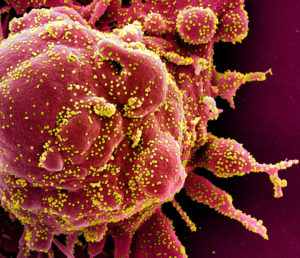MANILA, Philippines --- Two cities in Metro Manila were tagged as high-risk areas for COVID-19 transmission after experts in the field of research noticed the cities' high "attack rate" and number of new infections daily.
An Oct. 20 OCTA Research Monitoring report identified Mandaluyong and Makati as cities that need "attention" on highest COVID-19 cases per day, hospital occupancy rate as well as attack rate.
According to researchers' analysis, Makati is number one high-risk because it reported 59 new COVID-19 cases per day with an attack rate of 10 percent. The city has 79 percent COVID-19 bed occupancy rate for hospitals.
The attack rate measures the number of virus cases over the total population in a specific area.
Meanwhile, Mandaluyong ranked third with 34 new cases daily and an attack rate of eight percent. It has a 75 percent occupancy rate for its hospitals.
Outside of Metro Manila, OCTA experts said Baguio City landed on the second place with 39 new cases per day, 11.1 percent attack rate, and 69 percent hospital occupancy.
The OCTA group, composed of scientists and experts from University of the Philippines and University of Santo Tomas, recorded new cases from Department of Health's data from Oct. 11 to 17.
Its data for daily attack rate was based on DOH caseload from Oct. 4 to 17.
For hospital occupancy data, OCTA's basis was the nation's health department data from Oct. 16.
Recommendations
OCTA advised Metro Manila and other municipalities, especially high-risk areas to intensify contact tracing, testing and isolation to slow down transmissions in their communities.
The research group also called on high-risk areas to impose "more aggressive and effective localized lockdowns with stricter border controls."
Likewise, researchers said minimum health standards must still be observed by constituents in their respective communities.
"To this end, we reiterate the need for the national and the local governments to strictly monitor and enforce compliance with minimum health standards such as physical distancing, the wearing of face mask and face shields and proper hygiene to reverse the increase in transmissions at the community level," read the study.
NCR cities under low-risk
However, the local governments of Makati and Mandaluyong said all local government units (LGUs) in the National Capital Region were under low risk classification as per the Oct. 17 data of DOH.
"We were surprised of their study since DOH data shows we are low risk," Makati Public Information Office (PIO) issued in a statement, responding to the UP OCTA Research result.
"As of Oct 17 as per DOH report all LGUs in NCR are at LOW risk classification. Mandaluyong has a 2 week growth rate of -39.09 % & 4.86 % average daily attack rate," Mandaluyong Mayor Menchie Abalos said in a separate text message in response to Mandaluyong's third place in high-risk areas for COVID-19 infection.
Based on the DOH data provided by Makati LGU, the city has 6.21 percent attack rate.
Meanwhile, Abalos said they currently have four isolation facilities aside from COVID-19 hospital beds to cater to COVID-19 patients.
Abalos also noted that they are waiting for the Department of the Public Works and Highways to establish a 100-bed isolation facility soon.
INQUIRER.net is awaiting the response from Baguio City government regarding its place on UP OCTA's COVID-19 trends.
JPV

